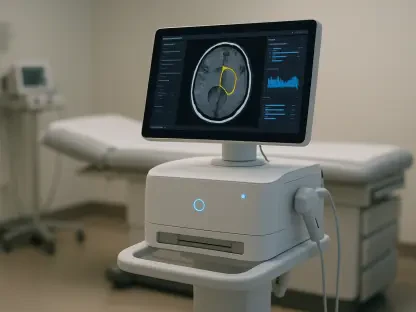The 340B Drug Pricing Program, launched by the federal government in 1992, was designed with a noble purpose: to help safety-net hospitals and clinics provide affordable care to low-income and uninsured individuals by mandating steep drug discounts from manufacturers. However, over the decades, this initiative has morphed into a sprawling, multibillion-dollar system that seems to benefit large healthcare institutions far more than the vulnerable populations it was intended to serve. A groundbreaking report from the Congressional Budget Office (CBO) has shed light on the program’s staggering growth and its unintended consequences, revealing a troubling reality. Instead of solely aiding the underserved, the program has driven up healthcare costs, placed a heavy burden on taxpayers, and contributed significantly to the federal deficit. This alarming shift raises critical questions about accountability and the true cost of a policy gone astray, demanding a closer examination of how such a well-intentioned effort has veered so far off course.
Unchecked Growth and Escalating Costs
The scale of the 340B program’s expansion is nothing short of staggering, with spending skyrocketing from modest beginnings to nearly $70 billion in recent years, according to the CBO’s analysis. This growth far outpaces the broader market’s increase in brand-name drug spending, which has risen at a much slower rate. A key driver behind this surge is the proliferation of hospital-affiliated outpatient clinics, often referred to as “child sites,” which have multiplied dramatically over the past decade. These facilities, frequently located in wealthier areas, cater to commercially insured patients rather than the indigent populations the program was designed to support. This shift in focus has allowed hospitals to reap substantial profits from drug discounts while straying from the initiative’s original mission. The financial implications are profound, as the program’s unchecked expansion has funneled billions into hospital coffers, often without clear evidence that these funds are being used to expand care for those in need, raising serious concerns about its sustainability.
Another critical factor fueling the program’s cost explosion is the rapid rise of contract pharmacies, retail drugstores that dispense 340B drugs on behalf of hospitals. Their involvement has grown at an astonishing average annual rate of over 30% in recent years, now accounting for a significant portion of the program’s spending increase. However, patients filling prescriptions at these pharmacies often pay full copays, unaware that hospitals are pocketing the discounted drug prices as profit. This disconnect means that the very individuals who should benefit from lower costs are left bearing the burden, while healthcare providers capitalize on the savings. Additionally, the program’s incentives encourage hospitals to prescribe higher-priced medications, further inflating costs across Medicare, Medicaid, and private insurance plans. This flawed financial structure not only strains federal budgets but also places an indirect tax on patients and insurers, amplifying the economic pressure on the entire healthcare system with little tangible benefit to the underserved.
Lack of Accountability and Transparency
One of the most glaring issues with the 340B program lies in its profound lack of oversight, which has allowed systemic flaws to fester unchecked. Hospitals participating in the program face no legal obligation to pass on drug discount savings to patients, nor are they required to reinvest profits into charity care for the vulnerable. Furthermore, there is no clear definition of who qualifies as a 340B patient, creating ambiguity that hospitals can exploit to maximize revenue. Without mandatory reporting on how subsidies are spent, the program operates in a shroud of opacity, making it nearly impossible to assess whether funds are being used as intended. This absence of accountability has transformed a policy meant to support safety-net providers into a mechanism for profit, often at the expense of those it was designed to help. The result is a system that prioritizes institutional gain over patient welfare, undermining public trust and highlighting the urgent need for structural reform to restore clarity and purpose.
Compounding the problem is the broader impact on taxpayers, who ultimately foot the bill for the program’s inefficiencies through increased federal spending and higher healthcare premiums. The CBO report underscores that the program’s design flaws contribute directly to the federal deficit, as costs spiral without corresponding benefits to low-income communities. For instance, when hospitals prioritize expensive drugs to maximize 340B discounts, the ripple effect raises expenditures for government programs like Medicare and Medicaid, which in turn burdens public finances. Patients, meanwhile, see no relief in their out-of-pocket costs, even as hospitals profit from discounted medications. This misalignment between intent and outcome reveals a program that has lost its way, failing to deliver equitable access to care while placing an ever-growing strain on the national budget. Addressing these transparency gaps is essential to ensure that public funds are directed toward genuine need rather than institutional enrichment.
Pathways to Reform and Restoration
Amid the mounting criticism of the 340B program, there is a clear consensus that reform is not just necessary but urgent to realign it with its founding mission. Proposed legislative changes aim to address the program’s most pressing issues by establishing a statutory definition of a 340B patient, ensuring that discounts directly benefit low-income individuals rather than hospital bottom lines. Additionally, curbing the unchecked growth of contract pharmacies and limiting their ability to generate profit for hospitals without patient benefit is a key focus of reform efforts. Mandating detailed reporting on how 340B funds are utilized could also introduce much-needed transparency, allowing policymakers and the public to hold providers accountable. These measures, if enacted, hold the potential to reduce federal spending significantly while refocusing the program on aiding the underserved, offering a practical path to mitigate the burden on taxpayers and restore faith in a critical safety-net policy.
Looking back, the trajectory of the 340B program serves as a cautionary tale of how well-meaning initiatives can spiral into costly burdens without proper oversight. The dramatic rise in spending, driven by hospital consolidation and contract pharmacy abuse, has placed immense pressure on public finances while failing to deliver measurable benefits to vulnerable patients. Reflecting on past missteps, it becomes evident that the absence of accountability mechanisms allowed systemic exploitation to flourish, leaving taxpayers and patients to bear the consequences. Moving forward, the opportunity for Congress to act on pending legislation offers a chance to rectify these failures. By prioritizing transparency, redefining eligibility criteria, and ensuring savings reach those in need, lawmakers can reshape the program into a true lifeline for the underserved. This moment of reckoning underscores the importance of vigilance in federal policy, urging a renewed commitment to fiscal responsibility and equitable healthcare access for future generations.









